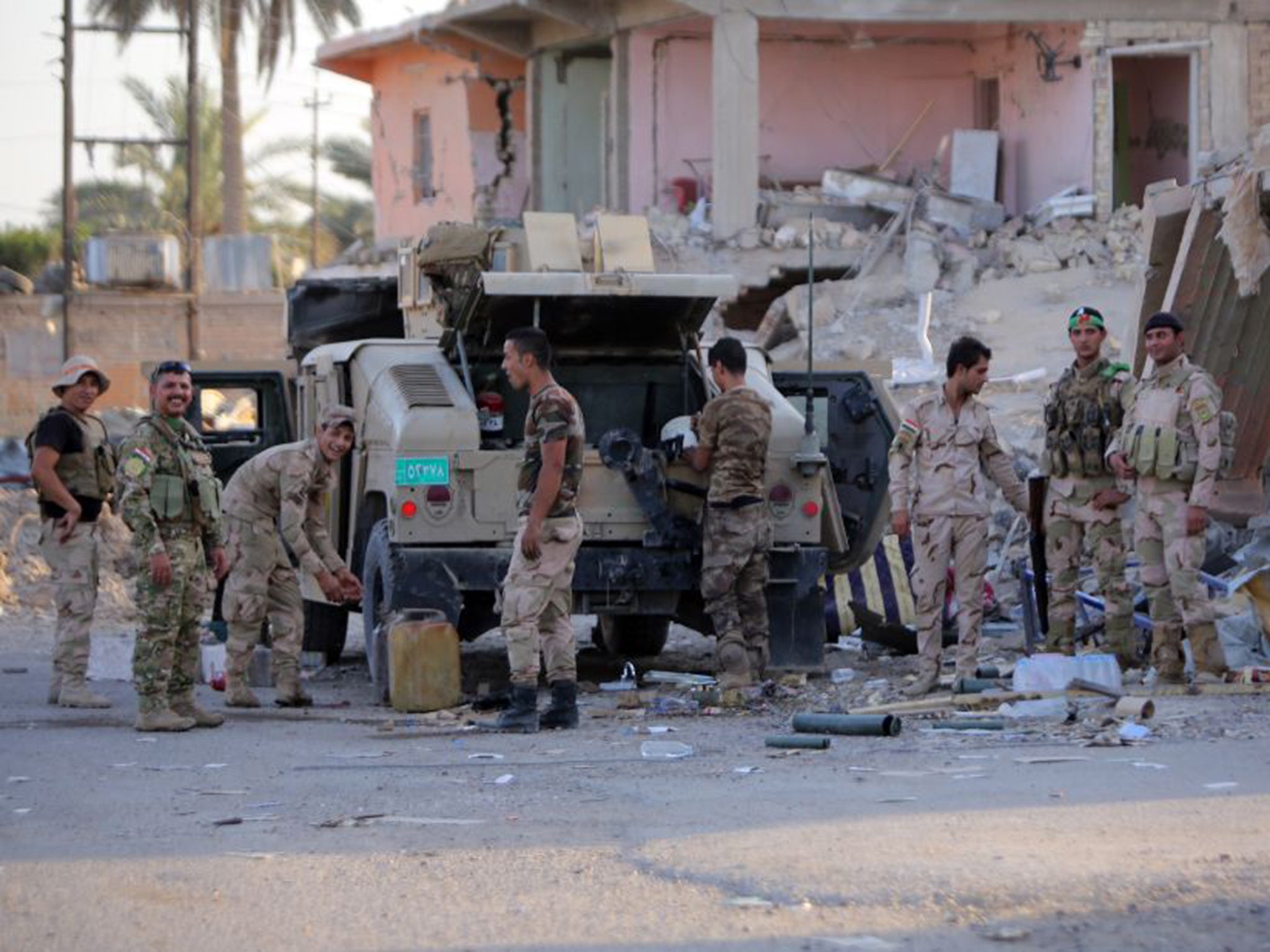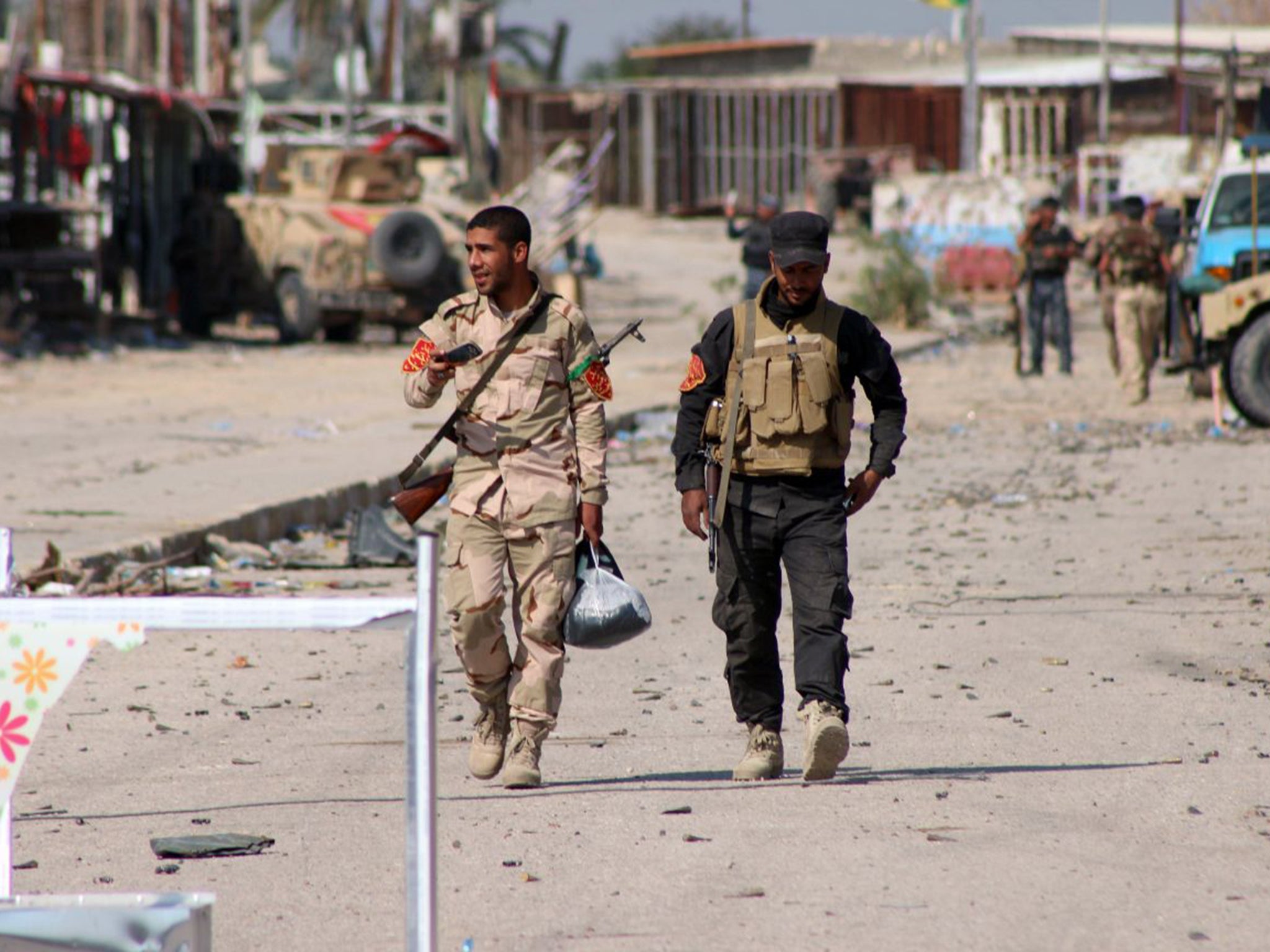War with Isis: Despite billions spent on weapons, the US has not been able to counter the militants' gruesome tactics
The West needs more than a 'White Knight' if it wants to succeed


There is a scene in Lewis Carroll's Through the Looking-Glass in which Alice meets the White Knight who is wearing full armour and riding a horse off which he keeps falling.
Alice expresses curiosity about why he has placed spiked metal anklets on his horse's legs just above the hoofs. "To guard against the bites of sharks," he explains, and proudly shows her other ingenious devices attached to himself and his horse.
Alice notices that the knight has a mouse trap fastened to his saddle. "I was wondering what the mouse trap was for," says Alice. "It isn't very likely there would be any mice on the horse's back." "Not very likely, perhaps," says the Knight, "but if they do come, I don't choose to have them running all about." It's as well "to be provided for everything", adds the Knight. As he explains his plans for countering these supposed dangers, he continues to tumble off his horse.
The White Knight's approach to military procurement is very similar to that of the American and British military establishments. They drain their budgets to purchase vastly expensive equipment to meet threats that may never exist, much like the sharks and mice that menace Alice's acquaintance. Thus the Pentagon spends $400bn (£257bn) on developing the F-35 fighter (Britain is buying planes at a cost of £100m each) to gain air superiority over Russia and China in the event of a war with either power.
Meanwhile, equipment needed to fight real wars is neglected, even though no answer has been found to old-fashioned weapons such as improvised explosive devices (IEDs) that caused two-thirds of the US-led coalition's casualties in Iraq and Afghanistan.
A strange aspect of the wars in Afghanistan and Iraq is that there has been so little criticism of the failure of expensively equipped Western armies to defeat lightly armed and self-trained insurgents. This is in sharp contrast to the aftermath of the US Army's failure to win the war in Vietnam in the 1960s and 1970s. The question is of more than historic interest because the US, UK and other allies are re-entering the wars in Iraq and Syria where they are seeking to "degrade and ultimately destroy" the Islamic State of Iraq and the Levant (Isis).
Perhaps the military are not being blamed for lack of success in Iraq and Afghanistan because the failure there is seen as political, rather than military. There is some truth in this, but it is also true that army commanders have been agile in avoiding responsibility for what went wrong. A senior US diplomat asked me in exasperation in Baghdad five or six years ago: "Whatever happened to the healthy belief the American public had after Vietnam that our generals seldom tell the truth?"
Iraq this year has seen a more grotesque and wide-ranging failure than the inability to cope with IEDs. The Iraqi Army was created and trained by the US at great expense, but this summer it was defeated by a far smaller and less well-armed force of insurgents led by Isis. It was one of the most shameful routs in history, as Iraqi Army commanders abandoned their men, jumped into helicopters and fled. The new Iraqi Prime Minister, Haider al-Abadi, admits that 50,000 "ghost soldiers" in the Iraqi Army had never existed and their salaries fraudulently diverted into their officers' pockets.
The Iraqi Army and Iraqi Police Service, some 350,000 soldiers and 650,000 police, had been built by the US at a cost of $26bn since 2003, according to the recent report of the US Special Investigator General for Iraq Reconstruction. It is a fascinating document that demands answers to many questions, such as how did $9.4bn get spent on training, staffing and supplying the Iraqi police, though this force is notorious for its corruption and incompetence. Another $3.4bn went on supplying the Iraqi Army with tanks, aircraft, boats, armoured personnel carriers and other equipment, much of which was later captured by Isis. Curiously, Isis was immediately able to find crews for the tanks and artillerymen for the guns without any lengthy and expensive training programmes.
The 3,000 American soldiers President Obama has sent back into Iraq are to start training the remaining 26 brigades of the Iraqi Army all over again, without anybody asking what went wrong between 2003 and 2014. Why is it that Isis recruits can fight effectively after two weeks' military training and two weeks' religious instruction, but the Iraqi Army cannot? Maybe the very fact of being foreign-trained delegitimises them in their own eyes and that of their people.

Renewed foreign military intervention in Iraq and Syria is primarily in the form of air strikes of which there have been more than 1,000 since bombing started in Iraq on 8 August. What is striking about these figures is that there have been so few compared to the 48,224 air strikes during the 43 days of bombing against Saddam Hussein's army in 1991. A reason for this is that Isis is a guerrilla force that can be dispersed, so only about 10 per cent of missions flown actually lead to air strikes against targets on the ground.
Only against the Isis forces besieging the Syrian-Kurdish town of Kobani in northern Syria is the US Air Force able to inflict heavy casualties. It is not clear why Isis continues with a battle where it is most vulnerable to air power, but the probable reason is that it wants to prove it can win another divinely inspired victory, despite heavy air attacks.
In more than 10 years of war in Iraq, Syria and Afghanistan, it is the insurgents and not those in charge of Western military policy and procurement who have developed the most effective cocktail of military tactics and methods of attack suited to local circumstances. These include various types of IEDs supplemented by booby traps that make those few areas reconquered from Isis dangerous for soldiers and uninhabitable for civilians.
IS has turned suicide bombing by individuals or by vehicles packed with explosives into an integral part of their fighting repertoire, enabling them to make devastating use of untrained but fanatical foreign volunteers. Isis deploys well-trained snipers and mortar teams, but its most effective weapon is spreading terror by publicising its atrocities through the internet.
Gruesome though these tactics are, they are much more effective than anything developed by Western armies in these same conflicts. Worse, Western training encourages an appetite on the part of its allies for helicopters, tanks and artillery that only have limited success in Iraqi conditions, although bombing does have an impact in preventing Isis using a good road system for attacks by several hundred fighters in convoys of pick-up trucks and captured Humvees.
While Isis may be suffering more casualties, it is in a position to recruit tens of thousands fighters from the population of at least five or six million that it controls. Six months after the Islamic State was declared, it has not grown smaller. As with the White Knight, the US and its allies are not undertaking the measures necessary to fight their real enemy.
Join our commenting forum
Join thought-provoking conversations, follow other Independent readers and see their replies
Comments
Bookmark popover
Removed from bookmarks